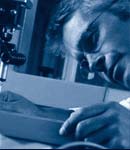|
|
![]() |
![]() |
![]() |
![]() |
![]() |
| Breakthroughs in the System of
Sustainable Technologies |
| |
![]() |
Principal Investigators
MIT:
L.Susskind, D.Laws
ETH: R.Scholz, O.Weber
UT: H.Shiroyama,
T.Suzuki, M.Yarime, R.Yamamoto, N.Haratu, S.Kraines
Chalmers:
J.Woexensus
EPFL: D.Favrat, F.Marechal
It is generally
accepted that the development of new technologies is necessary for a
sustainable future. However, as we search for ideal economically and
environmentally friendly technologies, we often lack the knowledge
of what makes specific solutions marketable. This project looks at
factors such as price, disclosed information on a technique,
consumer habits, and policies and their effect on an idea’s
acceptance and actual
application.
Goals/Objectives
The primary objective
of the project is to understand the dynamics of the complex
inter-organizational networks that drive sustainable technology
development. These networks are constituted, and themselves
sustained, through problem-centered interactions among the
developers and consumers of technologies, financial institutions,
governmental agencies and increasingly non-governmental and other
civic organizations. The translation of these findings into practice
relevant terms for these different organizations and the management
of transdisciplinary dialogues among these organizations is a second
objective that is a continuous part of the research process.
- Empirical study about the process by which sustainable
technologies break through from development to commercialization
happen, focusing on the interplay of policies, prices and choices
of firms and other various stakeholders play out on the complex
organizational networks.
- Practical experiment, that is, the specification of relevant
consensus building techniques likely to ensure the effectiveness
and credibility of social experimentation on the development and
diffusion of sustainable technologies.
Researchers have
undertaken two case studies:
- To examine in detail how different forms of environmental
policy have induced the diverse trajectories of technological
change in the chlor-alkali industry in Japan and Europe since the
1970’s.
- To examine in detail how different forms of environmental
perception and policy have induced the diverse trajectories of
technological change in the automobile industry in Japan, US and
Europe since the 1970’s.
The case studies have show
that when regulations are relatively lax, firms would have little
incentive to make innovations, rather responding through the use of
end-of-pipe technologies. Under stringent regulation, companies are
encouraged to look for new, radical solutions, but if these
solutions are applied in an inflexible way, it may lead to the
adoption of inappropriate technology and technological
lock-in.
Researchers have also identified seven roles that
are significant for public entrepreneurship. This determination is
critical to initiate action that motivates participants and shapes
the action environment that characterizes the successful cases of
technology development. The roles are: pioneer, venture capitalist,
organizer, superintendent, mediator, educator, and steward of common
good.
Findings/Results
- The primary driver of green innovation is rarely an individual
entrepreneur or a single company playing a leadership role. The
key to successful innovation is, more often than not, the creation
of a network of public and private actors who have a stake and
participate in the development effort.
- Green innovation usually demands correlative changes in a
multi-layered web of infrastructure. This often requires
coordination between actions at different levels.
- Innovation contributes to the development of its opposition.
- Innovation should be seen as an open-ended learning
process.
|
|



